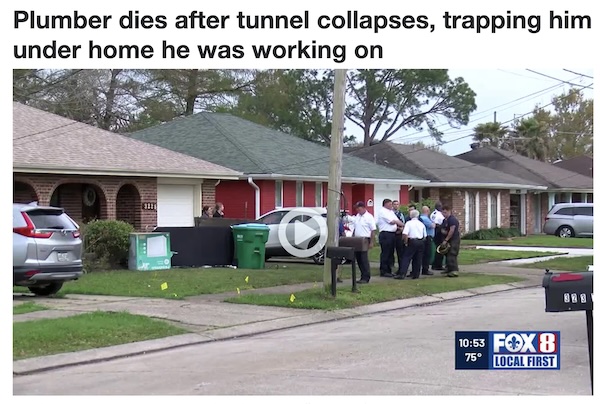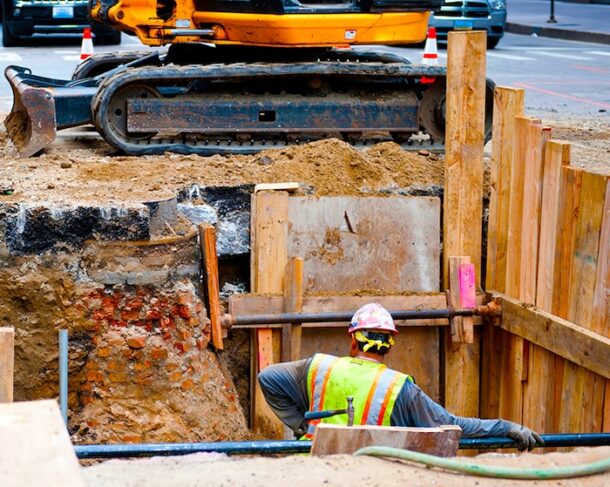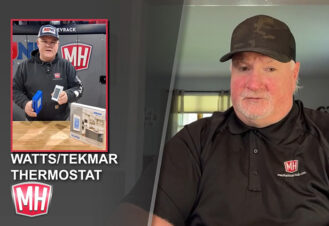A recent tunnel-related death raises more questions, and heeds the call for stricter safety measure adherence. Is convenience worth a life?
Recently, I was reading a news story of a plumber who died in a tunneling accident. This particular story involved a plumber in Louisiana working in a tunnel underneath a home, when it collapsed, leaving the plumber trapped some four feet underground. According to Local 4 News, “emergency crews worked for over an hour and a half to free him. Firefighters also pumped fresh air into the collapsed tunnel in an attempt to help, but he did not survive.”
Now I hear about these stories from time to time, and ask myself, how do these incidences keep popping up? Are proper safety precautions and procedures put in place? Does it happen more often than we think? We are not passing judgment for this particular incident, but it is tragic, nonetheless.

“An analysis by the National Institute for Occupational Safety and Health (NIOSH) suggests that excavation cave-ins caused approximately 1,000 work-related injuries each year, with about 140 resulting in permanent disability and 75 in death. When you consider confined space issues like asphyxiation, that number increases,” says Rachel Housman, CSP, CIH, and creator of Ally Safety, a provider of safety training and resource based on Occupational Safety and Health Administration (OSHA) requirements with a fun, modern twist for heavy industry. So, it does happen more often than we think.
According to information provided by OSHA, soil is heavy, and a cubic foot can weigh as much as 114 pounds, and a cubic yard can weigh more than 3,000 lbs. Most workers don’t realize the force that will hit them when a cave-in occurs. A person buried under only a few feet of soil can experience enough pressure in the chest area to prevent the lungs from expanding. Suffocation can take place in as little as three minutes. Heavier soils can crush the body in a matter of seconds.
For trenches between 5 feet and 20 feet deep, OSHA says shoring and sheeting, shielding, sloping and benching are all acceptable protective measures. It is up to the planners of the construction project and the competent person on site to determine which systems will work best. If an excavation is greater than 20 feet deep, a registered professional engineer must design the protective system.

Shoring systems are structures of timber, mechanical, or hydraulic systems that support the sides of an excavation which are designed to prevent cave-ins. Sheeting is a type of shoring that keeps the earth in position. It can be driven into the ground or work in conjunction with a shoring system. Driving sheeting is most frequently used for excavations open for long periods of time. Another type of sheeting, in which plates or shoring plywood is used in conjunction with strutted systems such as hydraulic or timber shoring. These strutted systems are also referred to as active systems. The most frequently used strutted system involves aluminum hydraulic shores which are lightweight, reusable and installed and removed completely from above ground.
A shield, also known as a trench box, is another common protective system used by contractors. Trench boxes are not designed to prevent cave-ins, but rather serve to “shield” workers within the structure should a cave-in occur. This is an excellent choice when placing continuous installations, as in pipe laying. The box is placed in the trench and dragged along with the progress of the work.
The excavation and trenching standard from OSHA along with when a space will also qualify as a confined space are guidelines—let’s review:
Excavation and Trenching
• If a trench is 5 feet (1.5 meters) or deeper, a protective system must be used unless the excavation is entirely in stable rock.
• If a trench is less than 5 feet deep, a competent person must evaluate it for potential cave-in hazards.
• If a trench is 4 feet or deeper, and there is potential for a hazardous atmosphere, the air must be tested before workers enter.
Employers should also ensure there is a safe way to enter and exit the trench. Keep materials away from the edge of the trench. Look for standing water or atmospheric hazards. Never enter a trench unless it has been properly inspected.
Confined Space
It’s also considered a confined space if it meets all three qualifications below:
• Large enough to enter and perform work
• Limited means of access and egress
• Not designed for continuous human occupancy
Trenching on jobsites without proper safety precautions can’t possibly be done knowingly, right? “I think the disregard for safety is everywhere and is constant but largely unintentional. Unless you work for a big business or are part of a good union, you’re unlikely to get in-depth safety training on a regular basis. Lots of small businesses don’t know what they don’t know and OSHA doesn’t have the budget to do as much outreach as would be beneficial. Because of that, safety training actually becomes a privilege instead of a right. That’s a big part of why I do my YouTube channel,” says Housman.
So why then do good, knowledgeable people choose not to use cave-in protection? According to OSHA, lately the answer from employers is that cave-in protection would have been “inconvenient” to use. Is convenience worth a life?




Join the conversation: